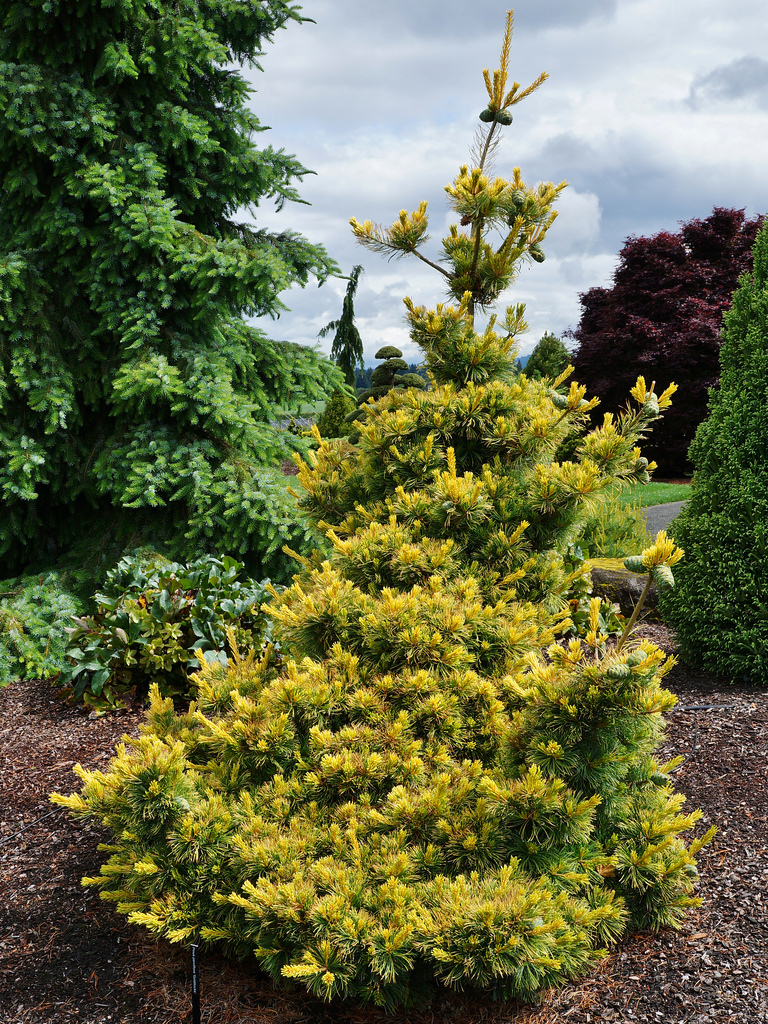Pinus parviflora 'Tenysu kazu' is a slow-growing, irregular upright selection of Japanese white pine with bright mango-yellow new growth in the spring. It needles grow with a slight twist which reveal silvery undertones. As summer turns to fall, the needle color fades to blue-green with yellow overtones. It is truly a striking plant; however it is considered by many to be a very weak clone subject to sudden death for no apparent reason. Nonetheless, its breathtaking beauty outweighs the risk.
After 10 years, a plant will be considered mature at 32 inches (80 cm) tall and 28 inches (70 cm) wide with a strong leader and spreading lateral branching, a growth rate of 3 to 4 inches (7.5 - 10 cm) per year.
This cultivar has a very confusing and disputed history. It is known to have originated in Japan and brought to North American around 1980 by conifer collector and white pine specialist, Dr. Henry Landis of Toronto, Ontario, Canada, a member of The Queen's council. Upon his death some of his plants were purchased by John and David Verkade, Neshanic Station, New Jersey who incorrectly recalled this specimen being labeled as 'Tensu kasu.'™ With Joel W. Springarn, they propagated the plant in the 1980s renaming it 'Dr. Landis Gold'™ as a tribute to Henry Landis. Sometime before 1999, Billy Schwartz, a colleague of Bob Fincham, brought back from Japan, a cultivar with many of the same characteristics which Schwartz called 'Goldylocks'™ (spelled deliberately wrong). Fincham propagated Schwartz'™s specimen and believes it to be the same as 'Tenysu kazu.'™ The marketing appeal of the name Goldylocks seems to be winning out as this is what it is called by most growers today - the name 'Tenysu kazu'™ being reserved for taxonomic purists and botanical gardens.
For now, the ACS will recognize the name 'Tenysu kazu,' an interpretation of the original Japanese name, as the proper cultivar name with 'Goldylocks,' 'Dr. Landis' and 'Dr. Landis Gold' relegated to AKA status, while 'Tensu kazu' and 'Goldilocks' are left as misspellings of other names. In his September 14th, 2018 Flora Wonder blog, Talon Buchholz, who along with his wife Haruko are recognized authorities in Japanese nomenclature, suggest that the correct Japanese cultivar name should be 'Tenshu kaku.' Considering that these two icons of the nursery industry help to correct the spelling of Pinus parviflora 'Tanima no yuki' from 'Tani mano yuki,' it is our hope that the proper name for this conifer will eventually take priority in the trade.
